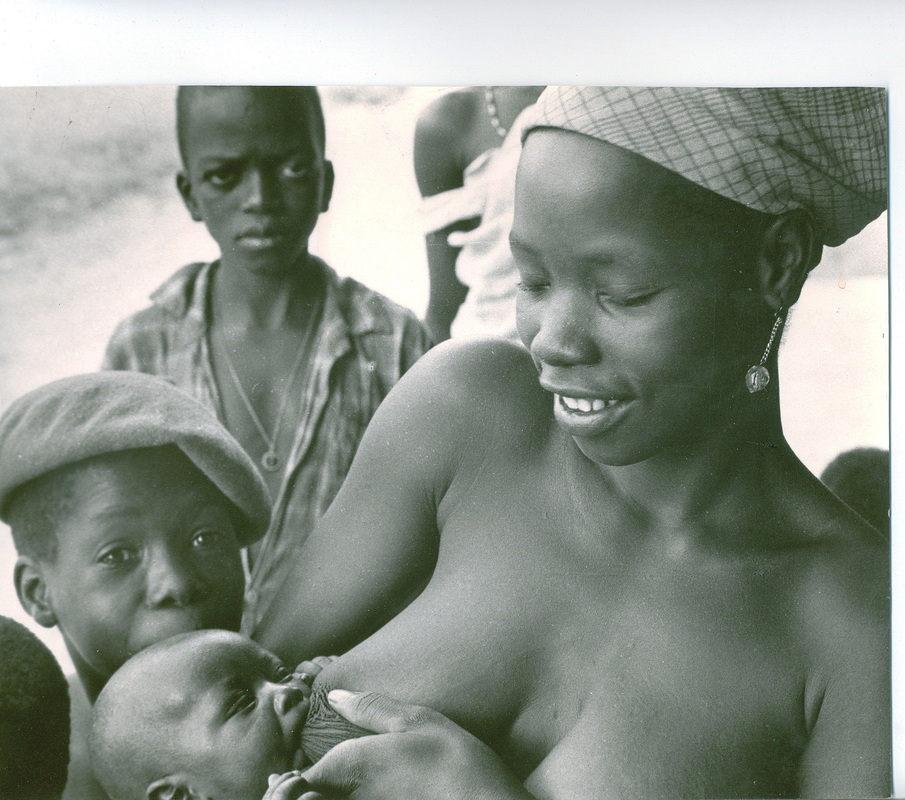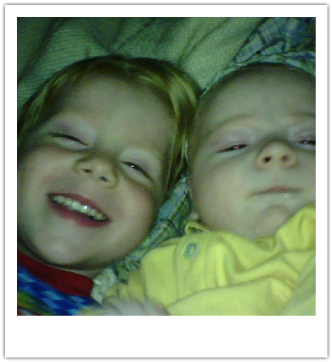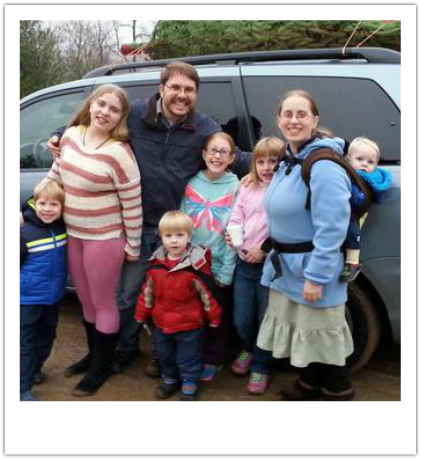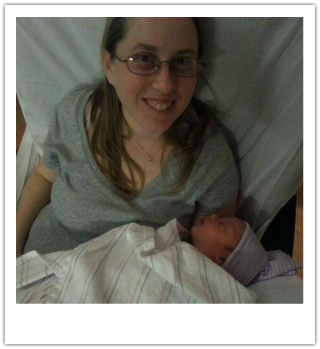|
What is Ecological Breastfeeding?
It must be noted that ALL breastmilk and any way a mother feeds her baby is good. Whether directly from the breast, from an eye dropper, dripped from a spoon, squirted with a syringe, dribbled out of a cup, or sucked out of a bottle--as the saying goes, "breast is best." The Seven Standards aren't intended to be a measure of whether or not you are "mom enough" (as the now famous TIME magazine cover challenged). There are seven "standards" because ecological breastfeeding is a means of spacing babies. As such, there are rules ("standards") to be followed. If the standards are followed, most women will experience completely natural infertility (for, on average, about 14-15 months after birth) as her body focuses on growing her babe in arms. She will neither ovulate nor menstruate during this time of natural infertility. Until mature eggs are released, there is no chance of pregnancy. As more time passes from birth, the more likely it is that a mother will begin to ovulate again. Studies of ecological breastfeeding mothers have shown that the actual rates of pregnancy are virtually zero from 0-3 months; 2% from 3-6 months, and about 6% after 6 months, assuming the mother has not experienced bleeding or spotting on two or more consecutive days. Eventually, full fertility returns and in the natural order of things, within the context of a normal marital relationship, and with nothing but ecological breastfeeding, babies will come about every two to three years. ...But if natural infertility--babies spaced without charting, abstinence, barriers, medications or devices--isn't something you desire, then ecological breastfeeding isn't for you.
Kippley’s Ecological Breastfeeding Program sets the stage as much as possible for successful breastfeeding. While it is not for every family, it certainly would benefit some families who are unlikely to hear of it. Unfortunately, natural breastfeeding continues to be viewed not only as a countercultural relic of the days of the cave woman, but it is also the best kept secret as a means to naturally space children, even in natural family planning circles.
Am I adding to the guilt? I hope not. My aim is to let mothers and couples know about the most natural form of breastfeeding so they have the option of choosing it, if it is right for them.
Natural breastfeeding moms need to come out of the closet, or more accurately, get out of the house! …and let the world know about this most beautiful way to space babies. To that end, in the coming weeks, I will describe in detail each of Kippley’s Seven Standards and present evidence-based information and personal anecdotes about each of them. I will follow this up with a series of posts explaining what moms, dads, relatives, employees, employers, clergy, and others can do to promote and support breastfeeding within your walls. Make sure to come back in the coming weeks to learn what you can do to encourage the spread of information about natural breastfeeding, to help promote healthier and happier families, mothers, and babies. Or get my posts directly in your email inbox by subscribing to them in the box in the side column of this blog! Photo Attribution
"Kabala mother" by John Atherton - originally posted to Flickr as New baby and proud mother, Kabala, Sierra Leone (West Africa). Licensed under CC BY-SA 2.0 via Wikimedia Commons - http://commons.wikimedia.org/wiki/File:Kabala_mother.jpg#mediaviewer/File:Kabala_mother.jpg
23 Comments
1/14/2015 07:25:34 pm
I have been ecologically breastfeeding for eight years and four babies, I have read all of Kippley's major works, and I think this may be the best article I've read on the subject. Your overview is comprehensive, but most important is that you are so loving and charitable. Normally this subject matter is fraught with guilt and competition, and I thank you for writing with such care.
Reply
Christelle Hagen
1/15/2015 08:09:03 am
Thank you for your kind words, Katherine! You have encouraged me! And I'm glad to hear that you are nursing all those babies. Good for you; good for them.
Reply
Mary Ellen Leners
1/16/2015 07:07:26 am
I'm a 78 year old mother of 6 that ecologically breastfed before that's what it was called. Your article is as informative as it is sensitive and I'll be sharing it.
Reply
Thomas Phoenix
11/19/2020 11:47:22 pm
Our family reaps great benefits from breastfeeding.
Reply
Christelle
11/20/2020 07:52:04 am
Thomas,
Reply
Thomas phoenix
6/28/2022 12:16:41 pm
Our family has good news to inform you. 6/29/2022 07:56:57 am
Thomas,
Thomas Phoenix
7/12/2022 10:52:17 pm
I would like to ask you the following information. 7/13/2022 08:23:39 am
Thanks again for your follow-up question. Since I wrote this post in 2015, I had 2 more children. The shortest length of natural infertility for me was about 12 months, with my youngest (and presumably last, given my current age) child. I was unable to practice ecological breastfeeding with her because she was born 10 weeks premature and required a feeding tube and I pumped my milk. However, she also breastfed, so I had a partial delay in fertility. I know for sure I became pregnant once while breastfeeding without a period first, but we were charting and hoping to become pregnant again at that time so it was a welcome event for us. I can't recall if there were other times, and I don't have my charts with me at the moment, but it is possible. In any event, all of our children are spaced at least two and a half years apart completely naturally and this was good for our family.
Thomas phoenix
7/16/2022 03:12:20 pm
I would like to receive useful information from you directly, do not know which channel I can follow from you.
Thomas phoenix
7/16/2022 05:06:53 pm
Thank you very much for your valuable answer.
Thomas phoenix
7/16/2022 05:10:59 pm
Message 2
Thomas phoenix
7/16/2022 05:24:03 pm
Message 3
Thomas phoenix
7/16/2022 05:27:02 pm
Message 4
Thomas phoenix
7/17/2022 10:52:54 pm
Message 4 7/18/2022 10:12:29 am
Hi again, Thomas!
Reply
Thomas phoenix
7/18/2022 12:04:07 pm
Thanks again for your experiences and comments that are invaluable.
Thomas
10/1/2022 08:51:05 pm
CHRISTELLE
Christelle
1/12/2021 08:37:46 am
Thanks for the encouragement, Madison! Please don't hesitate to reach out to me / us privately if you have specific questions about eco-breastfeeding, or anything else!
Reply
Thomas phoenix
6/28/2022 12:21:34 pm
Our family has good news to inform you.
Reply
6/29/2022 07:59:00 am
Thomas,
Reply
ทศพล วรพุฒ
7/16/2022 05:16:11 pm
Message 3
Reply
Leave a Reply. |
Details
Archives
November 2023
Categories
All
Enter Your Email Address to get St. Croix Birth Blog Posts in Your Inbox(We don't collect your email address and you won't get anything else from us.)
|





 RSS Feed
RSS Feed